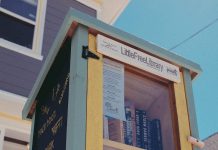Preventing slips and falls is crucial for making sure floor security, as it plays an important role in reducing mishaps and injuries. Such incidents can take place in different environments such as homes, offices, and public areas. They posture threats not simply to people however also can lead to serious repercussions for services, like legal dangers, higher insurance coverage expenditures, and damage to their image.
A Review of Slip-Related Accidents and Their Repercussions for Business and Individuals
Statistics suggest that slip-related occurrences are amongst the most common causes of work environment injuries. They can cause extreme repercussions, such as fractures, concussions, and long-lasting specials needs. For companies, the financial burden stemming from these injuries can be significant. These expenses typically consist of medical costs, lost performance, and prospective lawsuits. Hence, focusing on slip resistance is vital for securing both individuals and organizational interests.
Role of Correct Testing in Guaranteeing Compliance with Security Standards
Reducing the dangers of slips needs strenuous assessment of floor covering materials. Constant testing of slip resistance allows the detection of potential dangers before they lead to occurrences. Moreover, complying with requirements like AS 4586:2013 is essential, as it not only enhances security however likewise guards organizations from potential claims originating from non-compliance. By implementing thorough testing, services can take a proactive method to developing more secure areas for everyone.
By establishing we can continue to a more extensive examination of the specific regulations surrounding slip resistance in Australia, making it possible for all celebrations involved to understand their roles in supporting safe flooring standards.
Understanding Slip Resistance Standards in Australia
Maintaining floor safety in Australia includes having an extensive understanding of slip resistance standards, particularly the Australian Requirement AS 4586:2013. These guidelines develop required requirements to reduce slip accidents in different settings like companies and public locations.
Summary of AS 4586:2013 Requirements
Requirement AS 4586:2013 lays out procedures for examining and categorizing floor surface areas according to their slip-resistance efficiency in various environments. By assessing the frictional attributes of floorings when exposed to wet or dry conditions, this basic allows the identification of safe usage applications across various settings. Adherence to these guidelines not just improves security but likewise protects companies from possible legal repercussions coming from mishaps.
Legislative Standards for Guaranteeing Safe Floor Covering Conditions
Floor safety regulations in Australia include a mix of national and state rules. These regulations need businesses to follow specific security requirements to guarantee the safety of their clients and staff members. It is essential to conduct regular audits and checks to confirm that flooring products satisfy the needed slip resistance requirements.
Legal Implications of Non-Compliance
Failure to abide by slip resistance standards can cause extreme effects, consisting of fines, claims, and increased insurance premiums. Businesses may be held liable for negligence if a mishap occurs due to inadequate slip resistance, highlighting the importance of proactive measures in maintaining compliance.
The intricacies of slip resistance testing techniques reveals the value of comprehending these guidelines, as they play a vital role in preserving security across different environments.
ATTAR (Advanced Technology Testing & Research)
44/48 Rocco Dr, Scoresby VIC 3179, Australia
+61 1300 139 155
https://maps.app.goo.gl/nw9QoQjQbhnhr1pG7
For more information visit: slip testing















